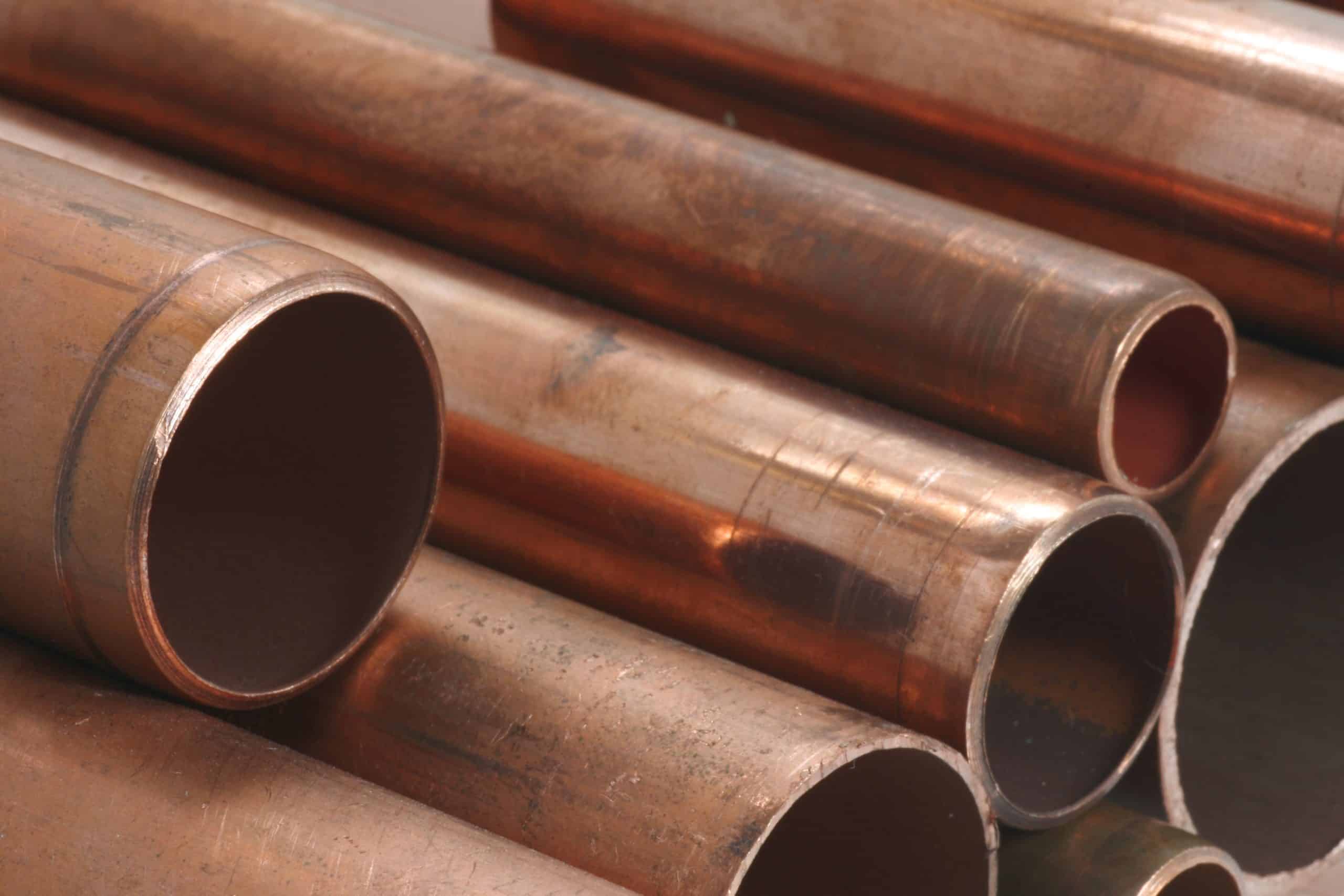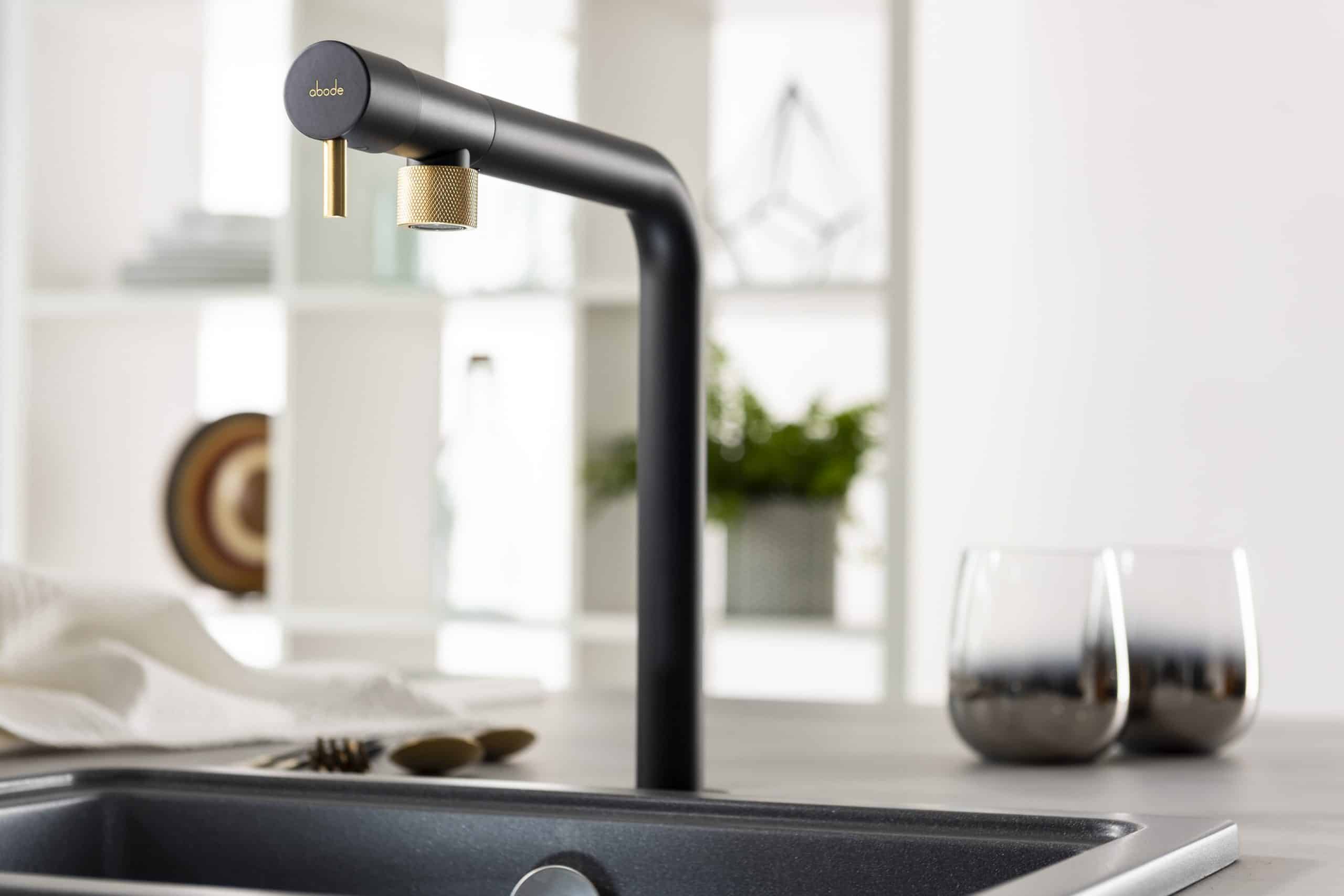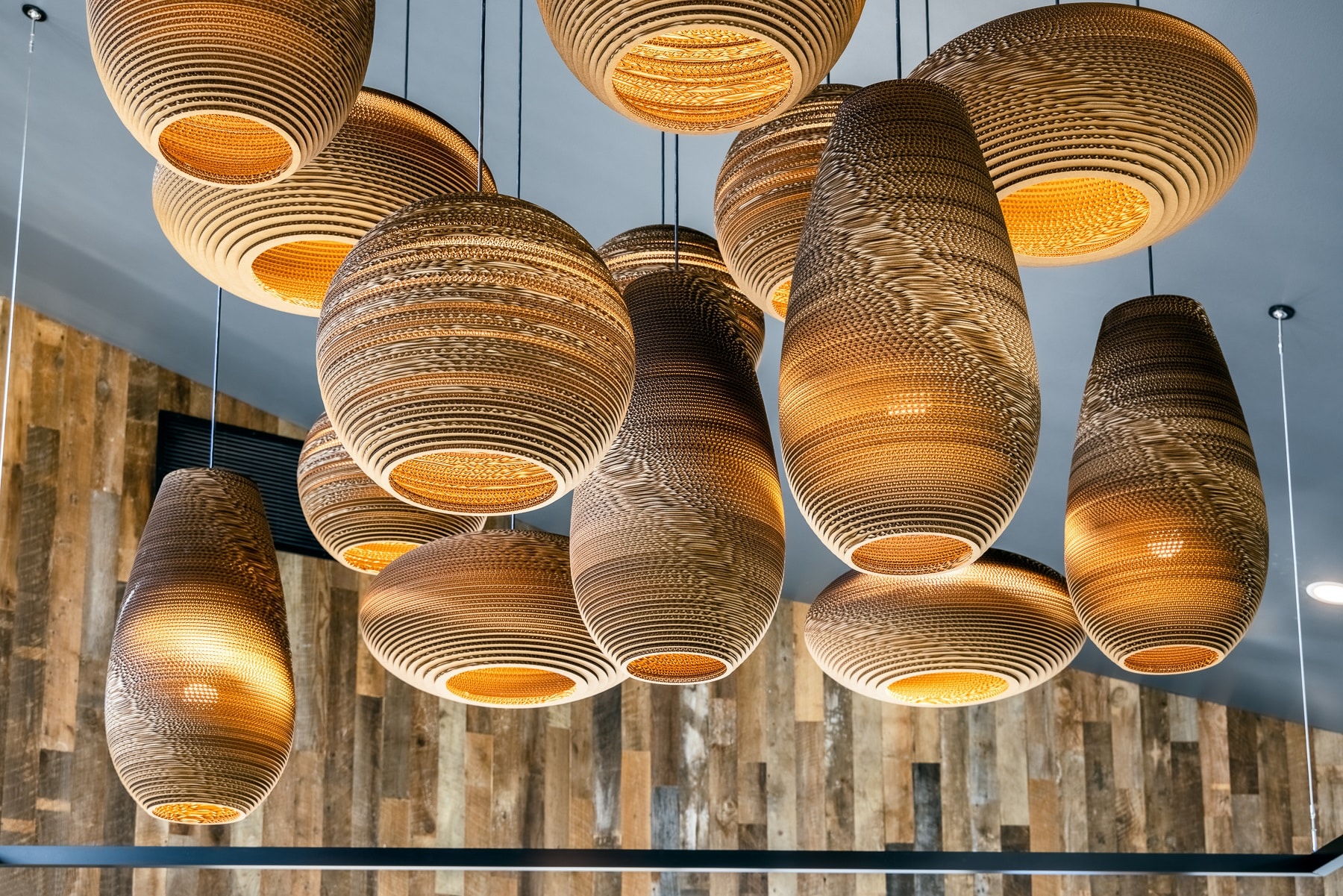Architects and plumbing engineers have a variety of materials to choose from when selecting pipes for a project. Each has its advantages, disadvantages, and best-use cases.
Learning more about these pipe types can help you have productive conversations with your architect and ensure you’re delighted with the end result.
Various Pipe Options
Below we cover 5 main types of pipe materials along with a few honorable mentions.
Copper
Best able to resist corrosion of all the piping materials, copper pipes have a long history of use and remain one of the most common types found in residential and commercial structures alike.
It’s a versatile option, coming in two main forms: rigid and flexible. It also comes in a range of sizes, listed by diameter in millimeters from outside edge to outside edge. While 15 mm and 22 mm are the most popular, you’ll find 18 mm and variations as high as 108 mm.
There are also varying thicknesses of copper piping:
- Type M is the thinnest and is best for vent, waste, and drain piping. You can use it for water piping too, and it performs nicely in homes for both cold and hot supply lines.
- Type L is the medium-thick option, best to transport drinking water. Like Type M, it also provides a suitable indoor cold and hot supply line.
- Type K is the thickest of copper piping, particularly useful for harsh environments, such as underground service lines.
PVC
The most economical of all piping materials is plastic, and of the various types of plastic utilized in piping, the most common is polyvinyl chloride or PVC.
PVC piping offers resistance to a variety of halogens and acids, low noise-emission, and hardly any temperature conduction. It’s also affordable and easy to install. However, PVC can’t resist solvents, is generally less sturdy and durable, and, therefore, has a shorter lifespan than many of the alternatives. This makes it less useful for outdoor conditions or underground environments, at least without appropriate additional support.
Additionally, while you can use PVC to transport hot water, selecting the right PVC piping for this use can be challenging, especially when accounting for longevity, as PVC is prone to shrinking and expanding in reaction to different temperatures.
PVC is also limited in its sizing options and can be prone to warping and even melting when used to carry hot water.
PEX
Cross-link polyethylene, or PEX, piping is a common plastic alternative for PVC frequently used for incoming water lines because it’s better at insulating heat. PEX is a bit easier to install than copper piping because it’s lighter and more flexible.
The main drawback to PEX piping is that PEX breaks down when exposed to the sun for long periods of time, which makes it inadvisable for outdoor use.
CPVC
Post chlorinated polyvinyl chloride is more flexible than PVC and can better tolerate high-temperature corrosive water. It also has a lining that increases its resistance to bacterial growth, and it is the easiest type of piping to repair.
CPVC pipes are not cheap, however; they are the most expensive of all plastic piping options. Like PEX, CPVC pipes are also a poor choice for outdoor use as they too can break down under long-term exposure to sunlight.
Galvanized Steel
These were once the most common piping material for residential uses. They are threaded at each end to allow them to be connected with other pipes via joints. They have a layer of zinc coating intended to resist rusting, though it’s not altogether effective at this goal.
While certainly durable, galvanized pipes have fallen out of favor in recent years due in large part to issues with safe potable water transport. Other disadvantages of steel pipes are their outsized weight, short lifespan, tendency to rust in spite of their zinc coating, vulnerability to corrosion, potential for lead contamination, and proneness to clogs.
Other Piping Materials
Other, less-commonly-used types of pipes include:
- Stainless steel
- Cast iron
- Polybutylene and High-density Polybutylene
- Black iron (Note: No longer used for conveying water except, perhaps, in fire sprinkler systems, black iron piping is now used mainly to convey propane or natural gas.)
The Copper Piping Market
Driving the prevailing demand for copper piping and tubing today is the increased prioritization of their particular advantages of durability, cost-efficiency, reliability, and recyclability over other piping materials.
A major part of the reason for these shifts in prioritization is the persisting modern boom in urbanization. As a result of this, communities must develop more advanced and expanded infrastructure, including bigger and more economical sewage lines. This can affect copper’s price.
The Global Copper Pipes and Tubes Market from Expert Market Research (EMR) describes the increase in global demand for copper piping as particularly strong in the HVAC sector. This is due to copper’s ease of handling, recyclability, and its resistance to temperature changes.
Goldman Sachs predicts soaring copper prices
Planning on building your home a few years from now? It’s worth paying attention to a recent warming from Goldman Sachs and other analyst firms indicating that copper inventories are “nearing depletion.” This combined with a shrinking CAPEX in mining is expected to drive prices significantly higher.
Realize also that getting new copper mines approved can take 8 years or longer due to labyrinthine regulations. So shortages will be difficult to resolve.
Pros and Cons of Copper Piping
Like any piping material, copper has its benefits and drawbacks.
Pros of Copper Piping
Copper pipes are one of the traditional types of pipes used throughout time for good reasons:
- Tolerability: Copper can withstand extreme temperatures in both directions, hot and cold.
- Sturdiness: Copper is durable and unlikely to leak or corrode.
- Reliability: Copper offers greater longevity than other alternatives, typically lasting 50 years or more.
- Reuse: When copper pipes ultimately wear and require replacing, you can recycle the copper for future use.
- Safety: Copper pipes are inhospitable to bacterial growth and won’t pollute the water passing through them.
Cons of Copper Piping
There are reasons why copper isn’t the only piping material used, however:
- Expense: As a global commodity, copper’s value continues to rise, particularly in recent years. In 2021, typical copper piping was at least $285 for 100 feet.
- Theft: Because of its higher cost, copper piping is highly vulnerable to theft on build sites. Anti-theft measures like alarms, CCTV, security guards, and more frequent inspections can add to the overall cost of copper piping and make it unattractive to customers.
- Environmental Impact: While copper may last longer than other piping materials and even be recyclable, the process of mining copper can be brutal on the environment. Therefore, some conscientious home and business owners reject the option out-of-hand, despite all its practical advantages.
When Copper Should Be Used
As noted earlier, copper pipes are the best choice anytime corrosion is a major concern. In addition to plumbing uses, other common and effective applications of copper piping include:
- HVAC
- Electrical
- Industrial Heat Exchange.
Additionally, as the demand and proliferation of electric and hybrid vehicles increase, the demand for copper piping will invariably increase in kind, as these types of vehicles utilize copper piping far more than standard combustion-engine vehicles. It’s expected that demand for EVs will be an additional factor driving copper prices up.
Property & Development Magazine | The Home of Residential Sector News




